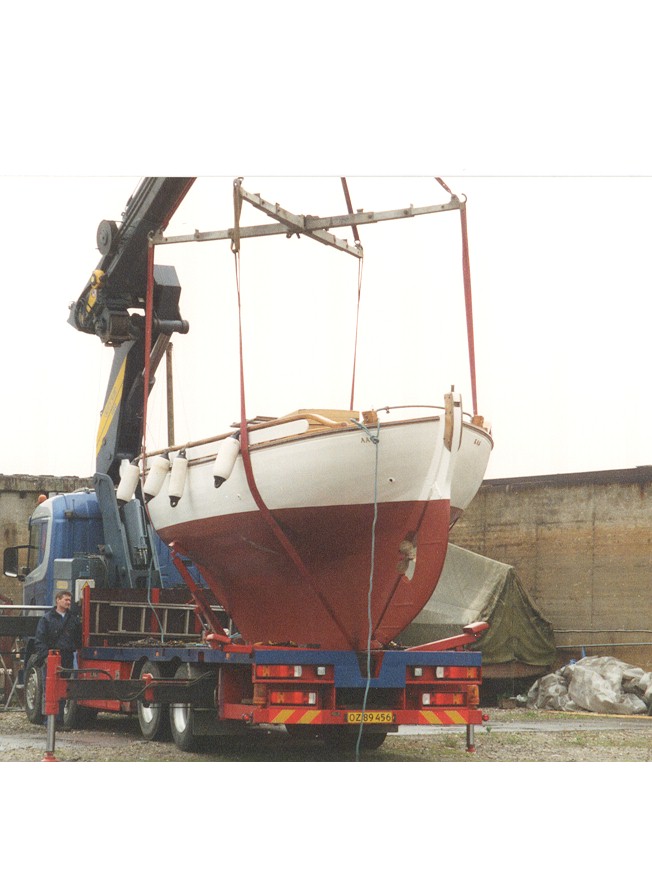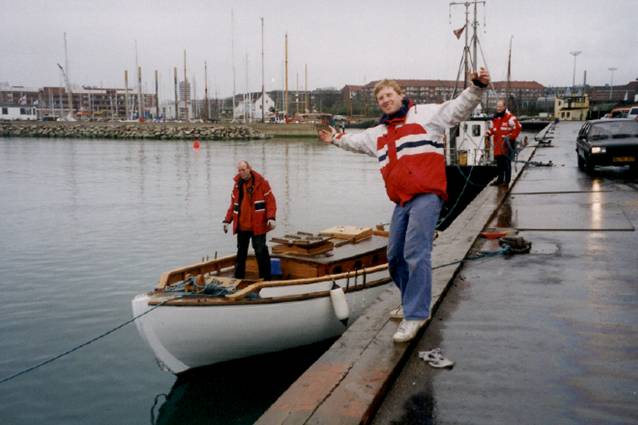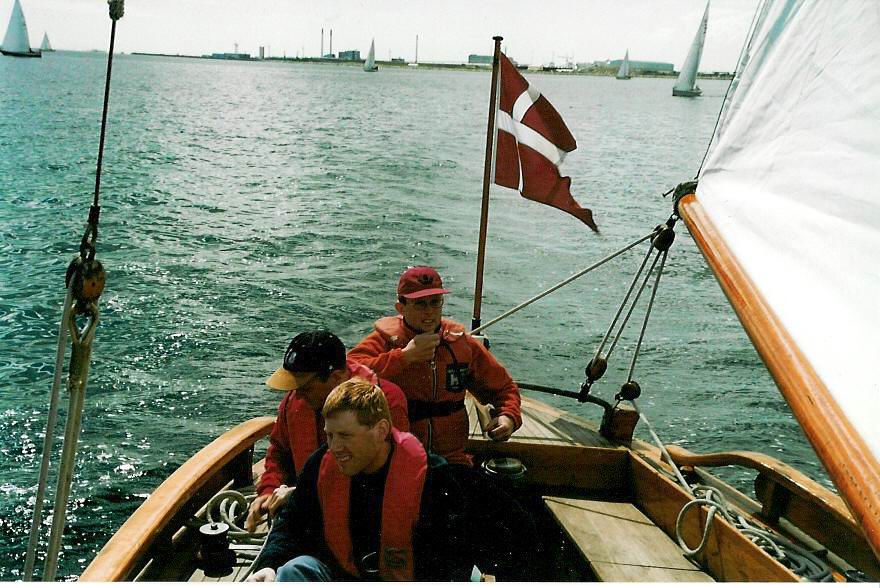Paraphrasing Robert Perry (designer of the double-enders Valiant 40 and the Tanyana 37 - alledgedly the greatest crusing
boats of the 20th Century), the most important variable when discussing a boat's seaworthiness is the skipper himself. But let's leave that aside for a moment...
The sailing capabilities of a double-ender have been subject for discussion ever since it became fashionable not to build boats in
the double-ender way. For Centuries most utility boats had been double-ended - primarily due to their sea-going abilities. But around
1900 new boat types emerged as a consequence of new technological possibilities and extreme racing rules. The "new boats in the dock" had narrow
beams, large overhangs, lighter (composite) constructions, and were costly and difficult to maintain. And alread in 1906, at the Yacht Racing Associations
conference in London, great efforts were put into getting rid of the by then excessively long and flat overhangs.
These boats have since then taken over as they are unquestionably faster on most tacks. But this is not the question here - it's about that much more intangible
thing call sailing abilities. So back to the double-ender. Many will know of Colin Archer who - rightfully or not -
has become more or less akin to a double-ender. Around the year 1870, along the rugged Western coast line of Norway, a lot of pilot boats were lost at sea.
This was the reason why Colin Archer designed a boat that should make piloting more secure. The pilot boats, e.g. Amalie,
were praised by their manoeuvrability and seaworthiness. Many rescue stories corroborate this. Colin Archer later built a refined pilot version. This ship was the
prototype for the pilot boats as of today. And in many aspects they resemble the many variations of the Danish Kragejoller, the Swedish Costers, and the Norwegian Hvaler boats (and probably
many other local/national boat types, which for hundreds of years served as fishing boats for local communities).
Great boats like some of the Valiants, the Tanyanas, or the Hans Christians on the world crusing circuit can be traced back to these boats.
Aage - and his construction lines - is somewhere in between the kragejolle and the Colin Archer Pilot. Consequently, it sails like a dream (even if it
probably weighs a few hundred kilos more than back in 1912 due to the teak-deck and Colin Archer-like bulwark). Aage's motion in a sea way can best
be described as soft and gentle. When properly balanced on the sail, he keeps sufficient little weather helm to make it worthwhile going on for hours and hours.
With roller-reefing and two head-sails it does require a lot of work in changing wind conditions but it is all in a day's work when either racing or cruising. On rare
occassions - with sudden gusts of wind - Aage can exhibit total sailing bliss due to him heeling over excessively and, strangely enough, reaching a perfect balance on the helm.
This perfect situation is hard to achieve constantly and is of course a combination of wind pressure, submerged hull, and good luck. And after all, with the old rig, we never pushed things into the extremes since, the mast was prone to buckle under the sheer column presure.
Aage has for five consecutive years participated in Denmark's (once the world's) biggest race - the 210 nautical miles race round the island Sjślland. The 2002 race was clocked in a mere 41 hours. On most tacks
Aage is able to race against any but the meanest of racing machines. But when we encounter head winds, Aage is not able to point as high as most
of the racing/cruising boats. When they point 37 degrees to the wind, Aage wants no more than 42 - and at a lower speed. But for most familiy cruising boat
(including much heralded brands as Bennetau, Bavaria, and most Orust based long-keels like, e.g., Hallberg-Rassy and Malo), Aage has no problem in
following suit. In non-racing conditions, we actually often experience to out-perform such boats (there is no such thing as cruising without racing any boat within
sight, is there?). Manouvering into docks is another story, though. With Aage's long keel, its small, untrustworthy engine, 3 meter bowsprit, and absence of bow-thrusters and the like,
we are often the late after-noon show for boats already in dock - not including the ones close by who fear that we want to go alongship them.
Aage is not what Adlard Coles would label as a sitting duck. On the contrary. In anything but the lightest of winds, the 75 sqm on a beam reach suffices to
keep Aage going. In very light airs, though, when some boats seem to be going on by the sheer will power of the skipper, Aage is disadvantaged
by his sheer size. In rough weather, Aage is a delight. More of his owners have experienced both ferro-cement boats and plastic boats in a blow (30-35 knots)
but nothing really compares with Aage when it comes to easy motions and ability to steer clear of troubles. It remains to been seen, how the new mast, with its
increased hight and more weigth aloft, will impact Aage's abilities. But compared to the 1950s bermuda mast and the 1920s gaff-rig, it is not likely to jeopardize Aage's
sailing abilities.
|



|
